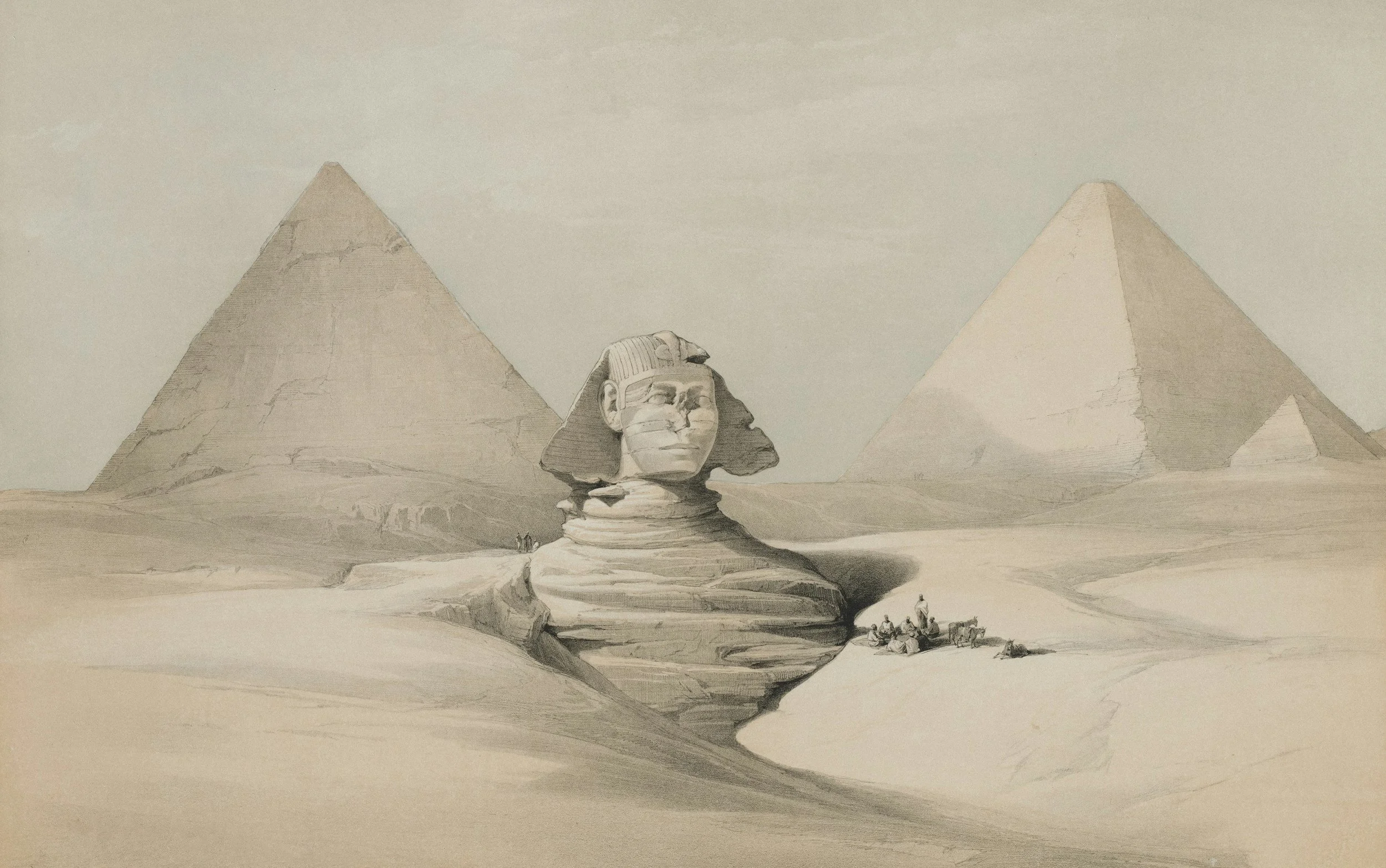The Sphinx
The Riddle of Millenia
In the shadow of the pyramids, long before tourists gathered on the plateau, a prince lay sleeping at the paws of the Sphinx. His name was Thutmose, son of Pharaoh Amenhotep II. Exhausted from hunting, he sought rest in the desert heat — and as he slept, the stone colossus entered his dreams.
The Sphinx spoke. Half-buried in sand, its vast body almost hidden, it promised the young man a destiny: clear away the desert that covers me, and in return, you shall be king of Egypt.
When Thutmose awoke, the vision stayed with him. He vowed to honor the pact. The sands were cleared, the Sphinx restored, and soon after, the prophecy was fulfilled — Thutmose ascended the throne as Pharaoh Thutmose IV. Between its paws, he set a carved monument, the Dream Stela, recounting the promise that had changed his fate. It stands there still, a stone testimony to a dream that shaped a dynasty.
Experience It
Carved from the bedrock of the Giza Plateau, it stretches 73 meters long and rises 20 meters high, crouched like a lion yet crowned with a human face. Most believe it represents Pharaoh Khafre, builder of the second pyramid of Giza. But its form speaks to something larger than a single king: the strength of the lion fused with the intelligence of man, a guardian gazing east toward the rising sun.
For the ancient Egyptians, it was divine. They called it Horemakhet — “Horus on the Horizon” — and built a temple between its paws where offerings were laid. The Sphinx was not a monument to visit, but a presence to worship, a mediator between earth and sky.
Later ages layered their own myths upon it. The Greeks saw it through the lens of their riddling monster, a creature of puzzles and fate. Travelers of the Middle Ages recorded its vastness and marveled at its half-buried form. Some imagined it was a king cursed, others a secret library carved in stone.
Its body bears the scars of time. The nose is gone, broken in an age long past. Weather has eroded its flanks. Yet even these wounds add to its enigma: how did it fall, when, and at whose hand? No answer has ever been certain.
And still, the greatest mysteries remain. Was it truly carved for Khafre, or could it be older — a relic of a forgotten era, its form reshaped by the desert’s rains in a wetter age? Do hidden chambers lie beneath it, as some claim, waiting to reveal secrets untouched for millennia?
The Sphinx gives no reply. It has watched the sun rise for thousands of years, silent and inscrutable, the guardian of a plateau and a riddle that refuses to end.
Experience It
The encounter with the Sphinx begins not in the open desert, but within the Valley Temple of Khafre.
Built more than 4,000 years ago, this temple still stands with its massive limestone blocks and polished granite pillars, one of the best-preserved monuments of the Old Kingdom. Here, priests once performed purification rituals for the king, while processional routes linked the temple to both Khafre’s pyramid and the Sphinx itself.
Walking through its stark halls, the stones close around you — silent, immense, cool in the desert heat. The passage narrows, guiding you forward. And then, suddenly, the space opens, and the Sphinx is revealed.
It rises from the bedrock, its massive body stretched forward, its face lifted to the horizon. From this angle, it is both startlingly close and impossibly large. The pyramids loom behind, but your eyes are drawn to the Sphinx alone — the guardian of the plateau, revealed not in a panorama, but in a moment of arrival.
Up close, the details come alive: the curve of the lion’s body, the headdress of a king, the eyes fixed on the rising sun. It is worn, weathered, scarred by centuries, yet unmistakably alive with presence.
Experience a riddle that will never be solved.




